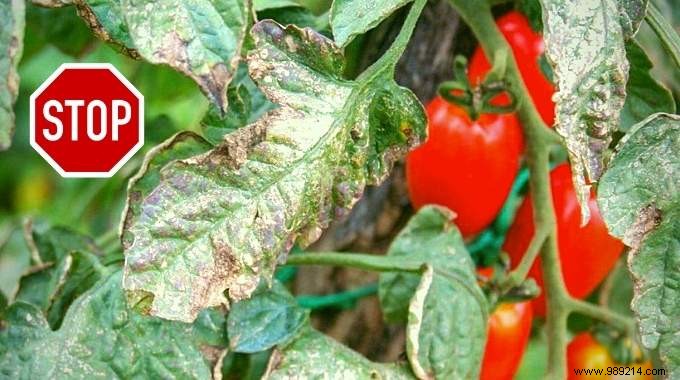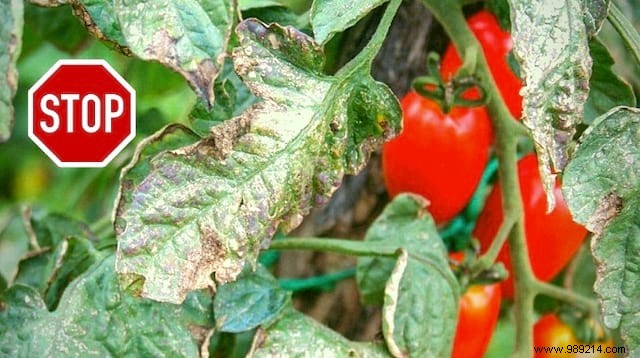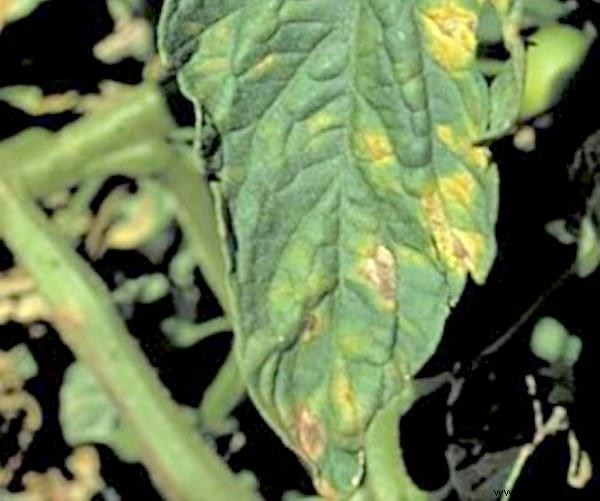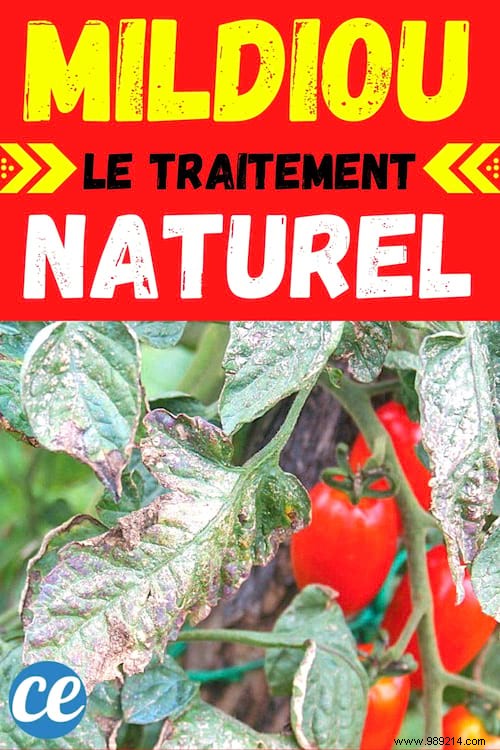
Are your tomato plants looking bad?
There are brown spots on the leaves which become fluffy?
Look no further:mildew has invaded your garden! So what to do?
To treat it, you don't need to spray your tomatoes with chemicals that will make them inedible...
Fortunately, there is a natural, curative treatment for late blight on tomatoes and young plants.
Easy to prepare and super effective, I only use this in my vegetable garden.
The remedy is to make a spray based on milk, baking soda and black soap . Watch:

- 4 liters of water
- 1 tablespoon baking soda
- 1 liter of milk
- a few drops of black soap
- bucket
- funnel
- spray bottle
1. Pour the milk and water into the bucket.
2. Add baking soda.
3. Stir well to dissolve the baking soda.
4. Add the black soap and stir.
5. Pour part of the mixture into the spray using a funnel.
6. Spray the mixture on and under the leaves of the tomato plants.

And There you go ! Thanks to this natural remedy, your tomato plants are rid of mildew :-)
Easy, fast and efficient, right?
And above all, super natural! Because there are no dangerous products in this anti-mildew mixture.
You can therefore continue to eat the tomatoes:just pass them under water!
The fruits remain edible if they are not damaged.
Obviously, all this is much cheaper than the antifungals sold in garden centers at around 9 or 10 € for 750ml.
Renew the application once a week, if possible after a downpour and in the early evening to heal them completely.
The mixture is effective against tomato, vine, citrus and potato late blight.
Bicarbonate is an excellent natural antifungal.
It is often used in the treatment of diseases in organic vegetable gardens.
Milk is also an excellent fungicide with bacteria that act against mildew microorganisms.
Finally, black soap smothers these organisms and prevents them from doing harm.

If you are a beginner gardener, you are probably wondering how to recognize mildew.
It is one of the most common diseases in gardens that can ravage the vegetable patch in a few days.
It is a microorganism that deploys a kind of filament that encloses the plant and penetrates its fibers.
To detect the disease, nothing could be simpler:
If you see yellowish or brown spots appearing on the leaves and a kind of white down is forming:this is not a good sign.
If the infection is more advanced, the whole plant is affected and the fruits quickly rot and smell bad.
The cause of late blight on tomato plants is simple:
Downy mildew loves warm, humid places.
This is why it develops easily in spring when there is an alternation between showers and hot periods.
One of the best tips for dealing with late blight is to space your plants well .
Why will you tell me? Because it prevents the disease from jumping from plant to plant.
That's a good question!
Because here at comment-economiser.fr, we don't like waste.
But this question is not as simple as it seems.
The answer depends on how advanced the disease is on the tomato.
If the leaves are infected with late blight, but the tomato has no signs of mold, then yes the tomato is fine to eat.
Simply wash the fruit with water and white vinegar as explained here.
If, on the other hand, the tomato itself is already damaged with open lesions, it is best to throw it away.
Why ? Because the bacteria could make you sick.
If the tomato is barely damaged, it is still possible to cut off the damaged part and eat the rest.
You now know everything about eating tomatoes that are affected by late blight.
